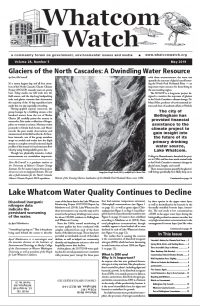by Peter Heffelfinger
Earlier this year, I attended a lecture by a fire ecology professor from WWU. on the upcoming fire season in the Pacific Northwest. The talk was presented by the Friends of the Forest, the local environmental group that originally helped save the city of Anacortes forest lands from regular logging.
Over the past 30 years, the Friends have expanded the local connection to the nearby forest via extensive school programs, guided nature hikes, work parties to maintain trails and attack invasive plants, as well as a fund-raising campaign to permanently save acreage from logging in the future. What was once a too-easily tapped resource to fill municipal budget shortfalls, is now seen as the protected green jewel at the center of Fidalgo Island.
The central message of the talk was simple: fire is a natural part of the forest ecosystem, which in the past controlled the underbrush and established a variety of forest habitats through limited burns, usually started by lightening strikes. Mature trees could withstand small brush burns at their base, as seen in the ancient char marks on long-lived Douglas firs.
A century of fire suppression, however, has built up an insurmountable amount of fuel on the ground over an area that is too large, too inaccessible, and too expensive to deal with. With the added years of drought, the effects of climate change, and the rise of the urban forest interface, whole communities, as happened in Paradise, California, now face the prospect of being consumed by fires that are off the scale in terms of heat intensity, height of flames, and the size of flying embers.
Old-school forest firefighting techniques, from small crews with hand tools, to airborne bombers dropping fire retardant, are no longer effective. Crews are dying when their trucks cannot outrun 200-foot walls of flame.
Recent Burns
Physically removing the underbrush on millions of acres is impossible. The only forest fire prevention is proscribed, well-controlled burns that eliminate the tinder on the ground that fuels the ladder of fire up into the trees. Doing that on a large scale, particularly around communities and cities surrounded by forests is a daunting prospect. Boulder, Colorado, recently under threat of evacuation from a massive forest fire, was saved by a 40-year old green belt maintained by proscribed burns.
The city of Anacortes had its own near escape from a forest fire two years ago with the Cranberry Lake fire, started by an illegal campfire in the forestlands very near adjacent houses. Luckily there was no wind; the DNR flew in helicopters to control the flames with buckets of lake water and brought in trained wildfire crews to help local firefighters on the ground. But it was dicey. Fires on the west side of the Cascades usually die down at night, due to the higher moisture content in the environment. Not this time. The flames in the trees were visible all night from the downtown marina.
Last summer, another fire, started by illegal burning in the unincorporated county area, scorched a hilltop near my house and close to my large garden a few miles away. Again, a fast response and the lack of usual afternoon wind prevented the 10 acres that burned from getting larger. But it was very scary, driving across the Skagit Flats, to see a column of black smoke rising from the south side of Mt. Erie.
Ultimately, the city, the county, and the state need to address fire danger in the urban forest interface, as houses are built next to and often into areas of the nearby woods. Usually forest fires occur mostly on the dry East Side. Last year, 40 percent of the fires handled by the DNR were on the West Side. The “Wet” side is drying up.
Being Fire Wise
Living in a house set in a grove of cedars and firs, I need to implement Fire Wise, a fire prevention protocol (available online) that reduces the potential ladder of fire. Cut tree limbs overhanging the roof; remove large bushes near the house; rake up layers of dead needles and twigs on the ground; stack firewood further away from the house. Most importantly, clean the gutters during the summer, not just when it’s raining in the winter.
Large forest fires create burning ember ‘bombs’ that fly ahead of the flames, landing on roofs. If it is a shake roof, the fire can start there; if it is a fire-resistant composition or metal roof, the ember can roll down to the gutter, where any dry needles and cones ignite and burn into the house through the wooden soffits under the eaves. The forest fire becomes the urban fire, not so much by an encroaching wall of flame, but by advance incendiaries floating in from above. Clean your gutters.
Forest Lands Under Threat
Fidalgo Island is in the Olympic Rain Shadow; it gets only 20-plus inches of rain annually, compared to higher amounts as you move towards the foothills to the east. The effects of drought hit here first. The city of Anacortes Forester, who has managed and protected the municipal forest lands for 18 years, recently led a forest walk for local volunteers who will be monitoring the forest conditions in this time of ecological change.
Unfortunately, the forest is already in crisis. At least 3,000 cedars have died in the past 12 months, due to: four years of drought from longer, drier summers; very rocky soil, especially on the ridges; and extremely low levels of water in the upland lakes during the summer. Douglas firs have become infested with a root rot that weakens the tree trunk, causing mature trees to snap off above ground or uproot in high winds. The root rot is native to the Northwest, but usually does not affect trees to this degree. Now you can look around a new-fallen Douglas fir and see a circle of other neighboring trees showing early signs of infestation.
The city forester, originally from Massachusetts, walked through the grove of dying cedars last fall; the trees were shedding all their “evergreen” leaves in a cascade of yellow that reminded him of the golden fall foliage displays in New England. And, on the ground level, the native banana slug, which usually numbers up to 2,000 per acre in our temperate rain forest, has become a rare sight, a disappearing symbol of the Northwest.
Garden Changes
My large vegetable garden is right below the south face of Mt. Erie and adjacent to the city forestlands. What affects the forestlands, affects the garden below. This spring I noted that the usual seasonal cascade of water down the steep slope behind the garden was nonexistent. Water for the garden flows year-round from an artesian well coming most likely from Whistle Lake further up in the forestlands. The water level slackens in August but has never gone dry, at least so far. A steady runoff from the well flows alongside the garden, keeping it sub-irrigated all summer. We are contemplating putting in a retention pond to capture the flow, just in case it drops too low.
On another level, the armies of large black and brown slugs that used to invade my beds have disappeared. They have been replaced by the tiny grey “English” slugs, which hide from the sun amidst the foliage, and by the hordes of the invasive Asian snails, whose shells provide portable sunscreen protection. Slug populations adapt to change.
Most of my spring brassicas transplants were put in early, protected by floating row covers against what I expect will be an extended root maggot fly season due to the warmer spring weather. I anticipate as well that the cole crops, bok choy and lettuces will go to seed earlier, as summer arrives in June.
The hoop house is up, for the hot-weather crops of tomatoes, peppers, and cukes. I might even try small melons if things really heat up. And this year, I am growing eggplants in large pots filled with commercial organic soil, to avoid the fusarium wilt that has built up in the garden soil from years of potato and tomato crops. The wilt does not affect the tomatoes or potatoes, but appears in their family cousin, the eggplant. Be preemptive and adaptable in these uncertain times. And look forward to the first ratatouille.
_____________________________________
Peter Heffelfinger, a Washington State University master gardener, has gardened organically on Fidalgo Island and the Skagit Flats for over 40 years. He has given workshops in year-round gardening for Transition Fidalgo/Eat Your Yard, Christianson’s Nursery, and at the Washington State University County Extension Service. He is a Salish Sea Steward, working on the invasive green crab survey.





























